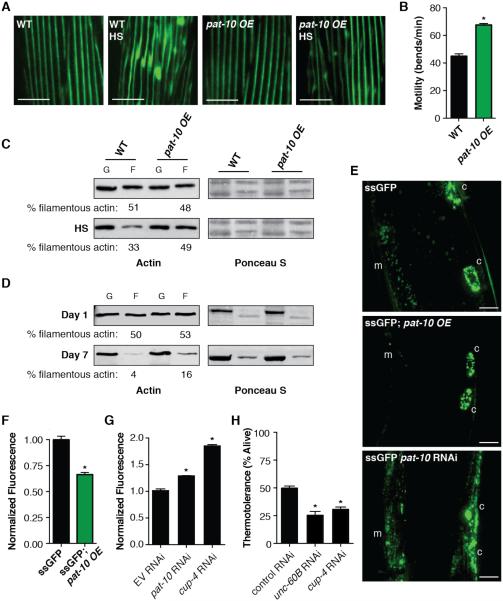Fig. 3.
pat-10 overexpression increases actin cytoskeletal integrity and improves cellular trafficking. (A) GFP tagged to myosin heavy chain in muscle shows a breakdown of actin organization after heat shock in WT worms, whereas overexpressing pat-10 maintains actin organization after heat shock. (B) Worm thrashes per minute in liquid were used to monitor motility. Loss of motility after heat shock is lessened in the pat-10 OE strain. (C) Heat stress causes a breakdown of filamentous (F) actin into globular (G) actin. This breakdown is prevented by overexpression of pat-10. Ponceau S staining shown as a loading control. (D) Aging causes a breakdown of F actin that is lessened by overexpression of pat-10. Ponceau S staining shown as a loading control. (E) Reporter strain that secretes GFP (ssGFP) from muscle cells (m), which is then endocytosed by coelomocytes (c) to be degraded. pat-10 OE strain shows increased efficiency of secretion and endocytosis, whereas RNAi of pat-10 impairs secretion and uptake. (F) Normalized GFP fluorescence is significantly lower in ssGFP reporter strain overexpressing pat-10. (G) Blocking coelomocytic endocytosis increases GFP fluorescence in the ssGFP reporter strain. (H) RNAi of genes that block coelomocytic endocytosis decrease thermotolerance. *P < 0.05; error bars indicate SEM; scale bars indicate 10 μm.

